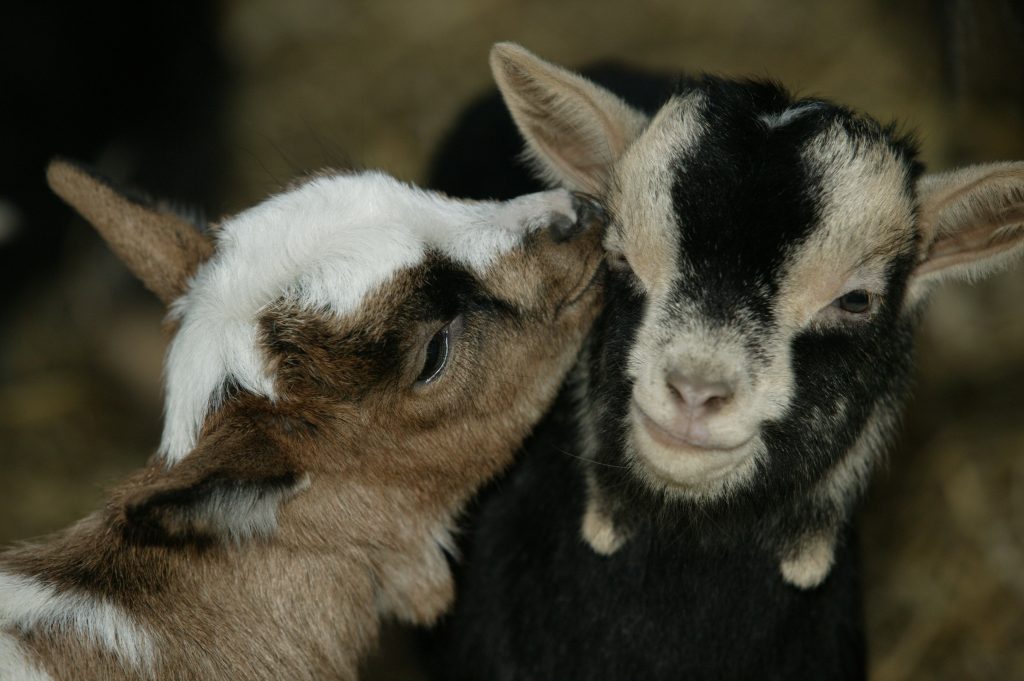Colostrum, the first milk a doe produces after she gives birth, is key to giving baby goats a strong, healthy start. US company Milk Products developed a list of 5 things to consider.
Since baby goats are born without immunity, colostrum helps provide immune protection until their immune system is fully functional. It provides important antibodies the doe is unable to pass on during pregnancy. The body of a newborn kid is uniquely suited to absorb these antibodies into the bloodstream via the intestines, but only in the first 24 hours of life. Absorption of these critical antibodies helps set the stage for a healthy, playful life, says Julian (Skip) Olson, DVM, technical services manager for Milk Products.
1.) Test does before kidding
Before kidding season, make sure to test your does for diseases that can be transmitted by colostrum. Work with your veterinarian for testing. It’s important to know if any does in your herd have caprine artritis encephalitis (CAE) or John’s disease,says Olson. Testing for these diseases before the kidding season can help ensure you don’t spread the disease throughout your herd.
2.) You have a role in colostrum delivery
A dose’s colostrum provides the best nutritional start for her newborn kid because it contains antibodies specific to your herd and environment. Timing is everything when it comes to providing colostrum to newborn goat kids. As time ticks by following birth, so does the antibody concentration in dose’s colostrum. Baby goats should begin to nurse naturally within hours of birth,says Olson. If they do not nurse within 4 hours or receive an adequate amount of colostrum, you’ll need to step in by feeding a colostrum replacer.
3.) Feed colostrum replacer as soon as possible
Failure to receive maternal colostrum is an emergency. You need to be prepared by keeping colostrum replacer, bottles and nipples on hand during the kidding season, says Olson. Colostrum replacers can help your baby goats receive critical immune support and nutrition. If kids don’t nurse within 4 hours, start bottle feeding a colostrum replacer. Continue to feed only colostrum for the first 24 hours of life, according to package directions, if the kid does not begin nursing properly. A baby goat’s body is best equipped to absorb colostrum within the first 4 hours of life, says Olson. Feeding a colostrum replacer can help ensure your newborn kids receive the antibodies they need for a strong start in this critical time window.
4.) Know how much colostrum to feed
Most pregnancies result in twins, but a goat can have anywhere from 1 to 5 kids per pregnancy. A healthy newborn baby goat will likely weigh between 8-11 pounds at birth. You’ll want to feed 2 ounces of colostrum replacer powder per 4 pounds of body weight,†says Olson. Plan to split the mixed solution into 2 or 3 feedings over the first 24 hours of life.†For example, if a newborn kid weighs 8 pounds, you’ll want to feed 4 ounces of colostrum replacer powder in total. Try feeding 2 ounces every 12 hours or 1.3 ounces every 8 hours. In addition to feeding the proper quantity, it’s important to feed colostrum replacer at a baby goat’s body temperature of 104 degrees Fahrenheit, says Olson.
Additional colostrum replacer feeding tips include:
* Refrigerate unused colostrum replacer solution promptly after mixing
* Reheat gently over warm water and mix thoroughly before feeding
* Do not microwave or freeze the solution
* Discard any unused refrigerated colostrum replacer solution after 24 hours
5.) Transition to milk replacer
After the first 24 hours, if your baby goat is still not nursing properly, milk replacer will provide the balanced nutrition it needs to grow and develop. Always choose a milk replacer specifically formulated for goat kids. Follow the packaging mixing and feeding instructions carefully to provide proper nutrition, says Olson.
Source: AllAboutFeed
Author: Kelsi Mayer



